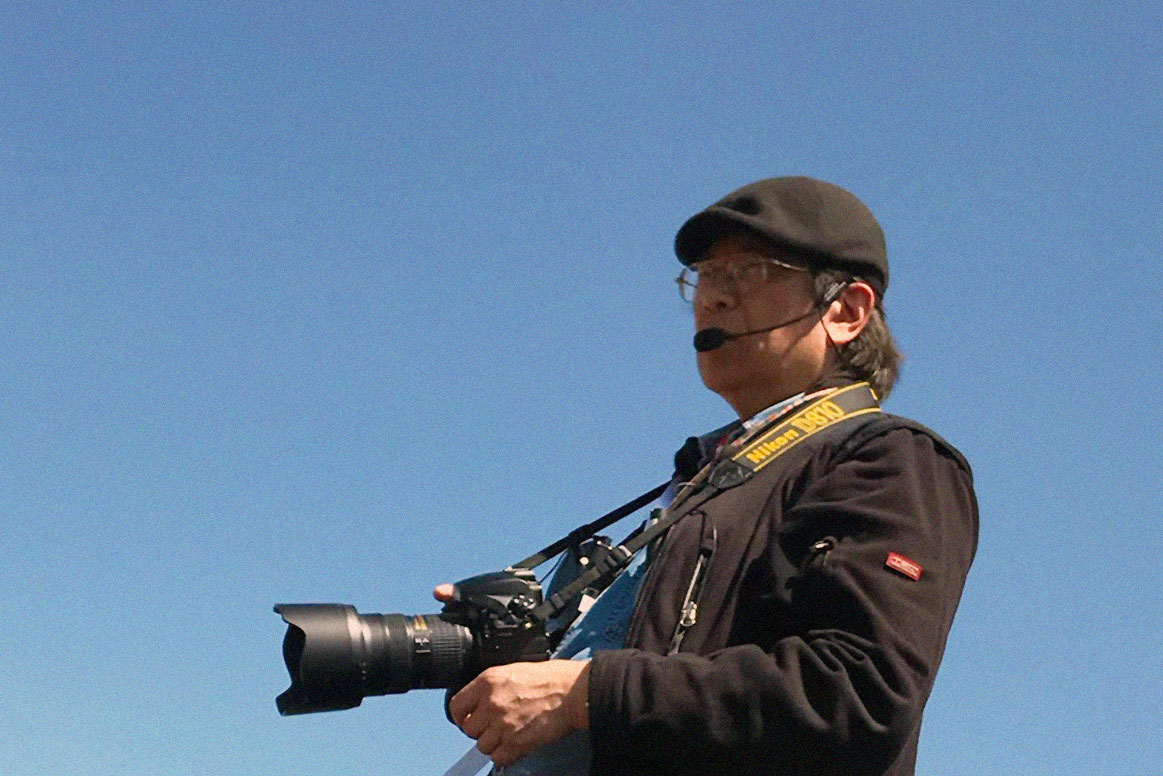You might remember the photograph. Heavy metal band Hsu-nami is rocking out on stage at an urban street festival, with front man Jack Hsu cranking out a solo on his… erhu?
Yes, the band included an amplified version of the traditional two-stringed Chinese fiddle. And in one image, photographer Corky Lee captured two very different threads in the Asian Pacific American story: both “margin to mainstream” and “Of course we can change the course of rock music by playing an electric erhu!”
When I see this photo, it brings to mind a late-night meeting with staff at the Smithsonian Folklife Festival offices in early 2010 where we planned a program featuring Asian American and Pacific Islander (AAPI) communities. After many hours reviewing images, we were still scratching our heads. How could we find the one photo that captured the diverse histories, cultures, garments, religions, and artistic traditions of this diverse population without falling into stereotype or cliché? We looked at fan dancers and Kung Fu practitioners, parades and painters, and the lovely cherry blossoms that line D.C.’s Tidal Basin.
We didn’t decide until the end of the evening. Only Corky’s photo tipped a hat to Asian heritage while making a confident, playful, exuberant homage to an American-born music tradition.

Corky Lee, who died of COVID-19 in New York City on January 27 at age seventy-three, was one of the few photographers who could have taken a photo like this. A master of humor, history, and human nature, he conjured a better world for all Americans by truthfully capturing what is, what was, and what should be.
I got to know Corky in the 1970s, when we both were active in the Basement Workshop, an early AAPI arts organization in NYC Chinatown that was the hub for many other political, social service, arts, and advocacy groups. A few years earlier, as a tenant organizer in the Two Bridges neighborhood of Manhattan’s Lower East Side, Corky had picked up a camera to document housing code violations committed by neglectful landlords. He understood the power that earlier social reform photographers such as Jacob Riis had on the urban landscape and was drawn to the calling.
Later, when he found that his front-page New York Post photo of a Chinatown man with a badly bleeding face galvanized the city against unjustified police violence, he fully committed himself to a combination of photojournalism and activism that he called “photographic justice.”

Thousands of people have fond memories of Corky, even if they only met him once. He was the person who would bring a cup of tea for your grandmother or lighten the moments before a performance with a joke. His social intelligence frequently resulted in unguarded emotion on the faces of his subjects, even if he had only met them a few minutes before. He also worked very hard, holding down a job at a printing company or some other gig while also attending every meeting, demonstration, festival, or party where the history of the AAPI community was unfolding.
Corky was a self-effacing, almost shy person once you got to know him, and I sometimes suspected that he used the camera as a way to be present and to contribute, without having to be in the spotlight. Even so, over the years, as his stature grew, he became a sought-after emcee and spokesperson for many causes.
For example, in one of his most heartfelt projects, Corky convened the descendants of Chinese American laborers who heroically built the western half of the Transcontinental Railroad but who were absent from the iconic “Golden Spike” photo at Promontory Point, Utah, in 1869. By retaking this photo in 2014 with descendants of those pioneering Chinese Americans, he showed us how photographic justice can be used to include the excluded and give today’s AAPIs hope that they too can shape America’s future.

Phil Tajitsu Nash has served as curator of the Asian Pacific Americans program at the 2010 Smithsonian Folklife Festival, staff attorney at the Asian American Legal Defense and Education Fund, and founding executive director of the Asian American Justice Center. He teaches AAPI history, art, and public policy classes at the University of Maryland and works on language and culture preservation issues with Indigenous communities in the Brazilian Amazon.


